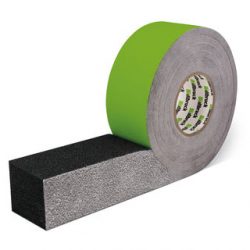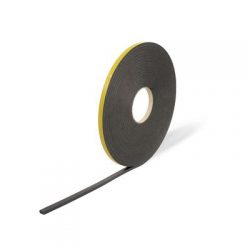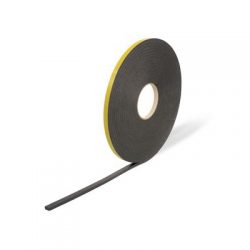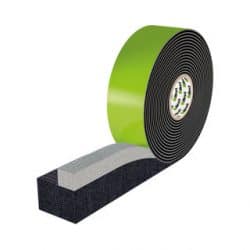Description
illbruck TN021 is made from a composition of viscoelastic acrylic copolymers and monomers with glass microsphere fillers which is then extruded and cured using UV light. There are no solvents used during the manufacturing process. The product is naturally tacky and is capable of forming permanent bonds with many non-porous materials, in many cases eliminating the need for mechanical fasteners in extreme environmental conditions.
Selection
The table on the reverse of this page should be used as a guide to selecting the correct product; however, in all cases, the user is advised to conduct indicative testing to determine the suitability of the product for the intended application. Please contact our technical sales department for further advice and to request samples.
Colour
White, dark grey, black and clear
Packaging
Boxed quantities variable dependent on size. Contact tremco illbruck Customer Service Department for details.
Technical Spec – Download Datasheet for TN021
Substrate Design Considerations
- Special consideration is required to ensure the substrates are flat and straight to allow even compression of the tape.
- A general guide will be to have 55 square cm per every 1 kg of static load. The actual amount of tape to be used for each application will depend again on the particular application and user evaluation is required to determine the optimal tape application.
- The necessary tape thickness will depend on the rigidity of the substrates, their irregularity and the amount of application pressure which can be applied to bond the surfaces. The mismatch between surfaces must be less than half the tape thickness. This general rule will apply only when there are firm lamination pressures to establish good surface contact. To test potential surface contact problems, bond tape to the rigid or irregular surface that you intend to use and then laminate a test piece of 0.6 mm clear acrylic and apply pressure. Observe the bond contact area through the clear acrylic substrate.
- The gap between substrates must be constant, if not, lifting of the tape may occur and allow dirt ingress.
- Allowance should be made for substrate expansion, for example, avoiding tight joints between glazing bars.
- Timber should be sealed on all surfaces. Intersections in glazing bars may be sealed with flexible joint filler if required. With wider substrates and glazing bars (20 mm and above) it is recommended to use two narrow strips of tape applied along the length of the substrate / bar. This helps reduce air entrapment and the compression force required to consolidate the bond.
- Presence of co-extruded gaskets on glazing bars has to be considered, and tape thickness should allow for full contact with minimal compression of the gasket.
- Tape thickness should be such that good contact with the substrates are made along the full length of the bond line (this should be checked after assembly).
Surface Preparation
- Wipe the cleaning solution (AT200) onto the surface and scrub with a clean rag or paper towel until the surface is clean and dry. It is better to use one rag for cleaning and one rag for drying.
- Be sure to change rags or towels often to avoid smearing dirt around or contaminating the already clean surfaces. Cleaning has to be done until there is no visible dirt on the cleaning rag.
- After cleaning and drying the tape can be applied.
- If the substrate(s) require the use of a primer, then the substrates should be cleaned first, then primed following the directions specified on the primer.
- If the substrate(s) require abrasion, then the substrates should be cleaned, abraded and then cleaned again.
Application
- The recommended application temperature is +20°C. The minimum application temperature is +10°C.
- Unwind the roll to expose the adhesive surface and place on to one of the surfaces to be bonded taking care not to stretch the tape
- Remove the protective release liner and carefully apply the other component. Where component positioning is critical, remove only the start of the release liner, position and hold the component onto the tape and pull out the remaining liner
- Apply firm pressure (15psi) to the component to consolidate the adhesive bond. Maximum adhesion will be achieved after approx 72 hours. Avoid stressing the bond in the first 24 hours.
Please Note
Do not use in applications where the tape will be constantly submerged in liquid. For external applications dark grey tapes are recommended to reduce the visibility of staining from rain washed dirt ingress and weathering.
Health & Safety Precautions
Safety data sheet must be read and understood before use.





